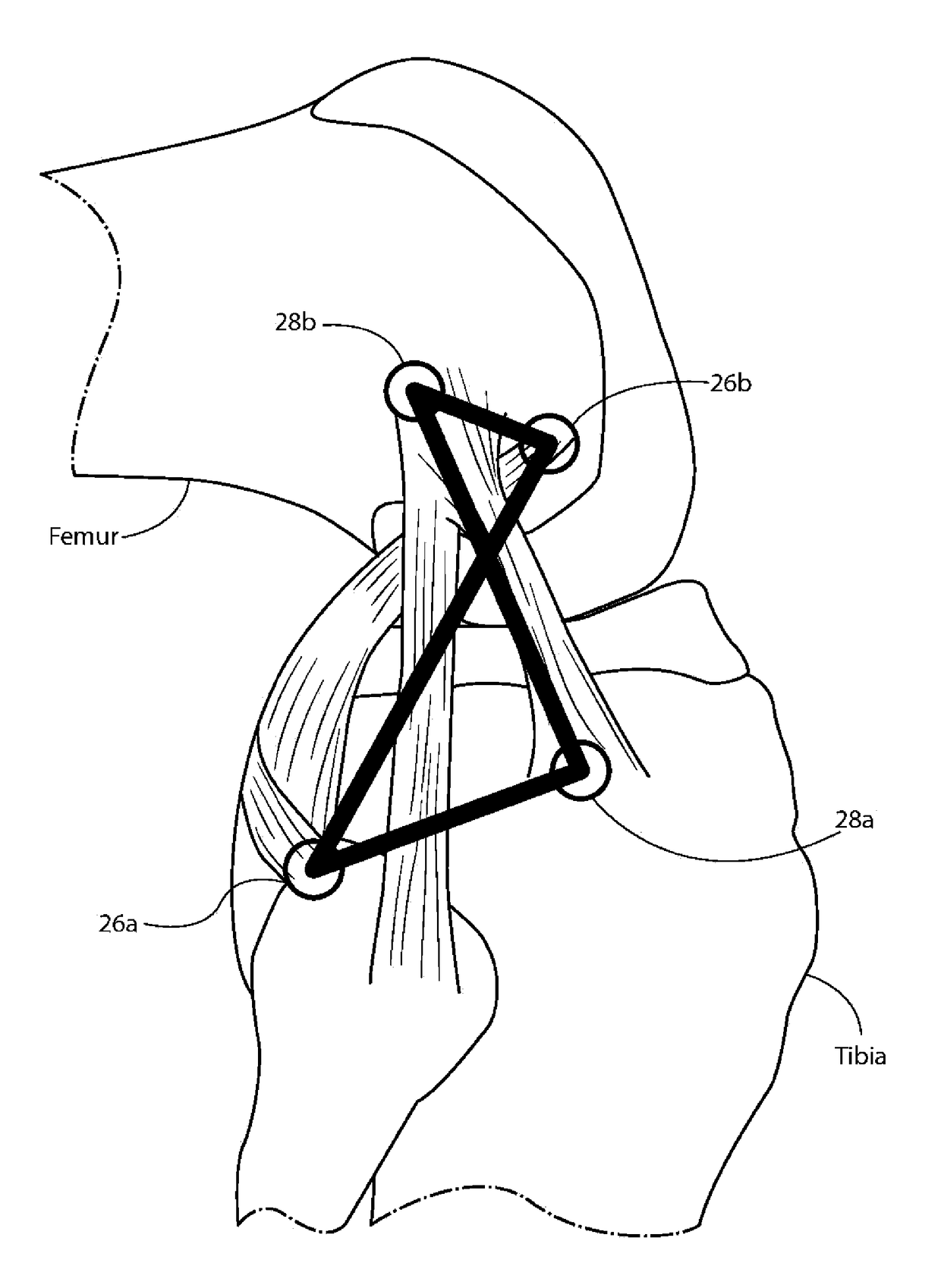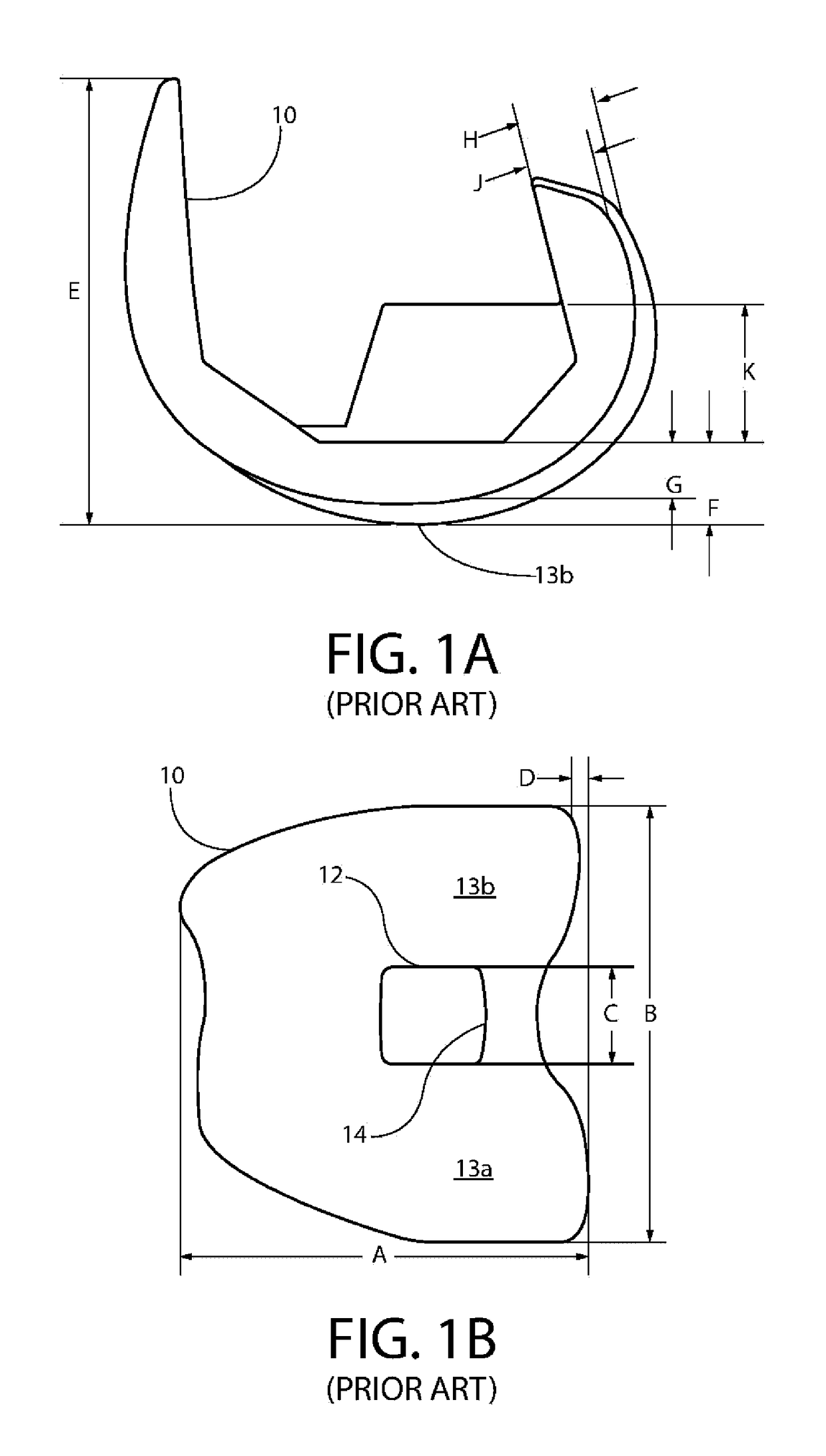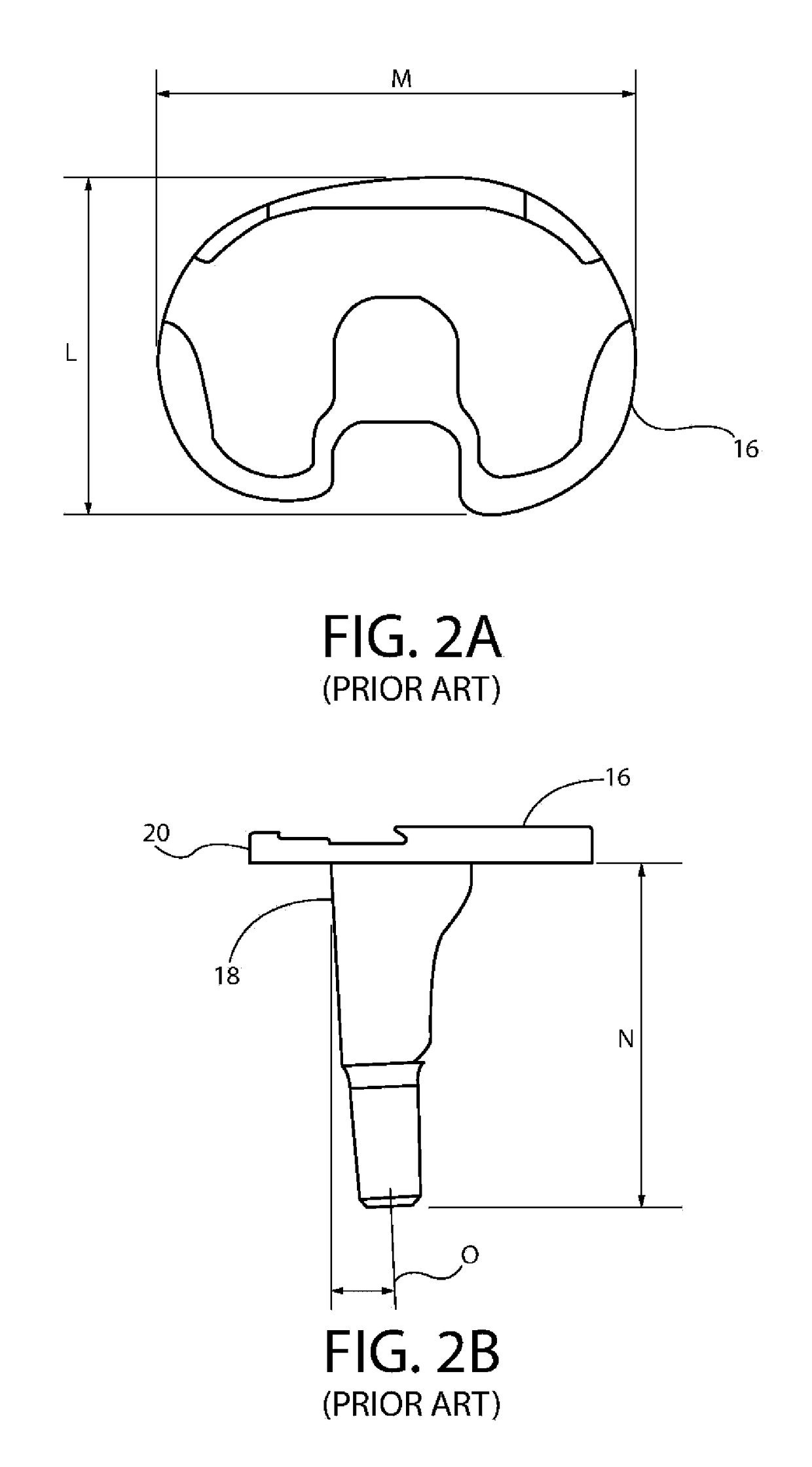Cruciate replacing artificial knee
a technology of artificial knees and cruciate ligaments, applied in the field of artificial knee prostheses, can solve the problems of reduced functionality of tkr compared to the original knee, deficient solutions, and inability to provide replacements
- Summary
- Abstract
- Description
- Claims
- Application Information
AI Technical Summary
Benefits of technology
Problems solved by technology
Method used
Image
Examples
Embodiment Construction
[0031]In order to provide a more anatomically correct TKR, prosthesis embodiments that replicate the function provided by both the ACL and PCL are desirable. Referring to FIG. 4, a healthy human knee is illustrated with a loop 30, representing an exemplary artificial ACL / PCL ligament, drawn over the location of the original anatomical ACL and PCL. The section of the loop 30 constituting the artificial PCL is bounded by points 26A and 26B. The section of the loop 30 constituting the artificial ACL is bounded by points 28A and 28B.
[0032]Generally, the present invention provides various methods of utilizing an artificial material, preferably a synthetic fiber or cord, to replace an ACL and PCL, such that the artificial material is configured similarly to the respective orientation and location of the ACL and PCL in a normal knee. It should be understood, however, that the term “artificial” means only that it is not the original anatomical ACL or PCL ligament in its original form prior ...
PUM
 Login to View More
Login to View More Abstract
Description
Claims
Application Information
 Login to View More
Login to View More - R&D
- Intellectual Property
- Life Sciences
- Materials
- Tech Scout
- Unparalleled Data Quality
- Higher Quality Content
- 60% Fewer Hallucinations
Browse by: Latest US Patents, China's latest patents, Technical Efficacy Thesaurus, Application Domain, Technology Topic, Popular Technical Reports.
© 2025 PatSnap. All rights reserved.Legal|Privacy policy|Modern Slavery Act Transparency Statement|Sitemap|About US| Contact US: help@patsnap.com



